Japanese Native Chickens - Saving the Earth through their Diversity!: The Foundation of the Japanese Avian Bioresource Project Research Center

We talked to Professor Masaoki Tsudzuki, Animal Science Division, Department of Bioresource Science, Graduate School of Biosphere Science.
(September 1st 2010, Interviewed by Public Relations Group, Community Collaboration and Information Policy Office)
Introduction
The Japanese Extremely Long Tail (Onagadori), a chicken breed with DNA responsible for extremely long tails, is rapidly disappearing. The Chugoku Shimbun on August 8th wrote that the breed is even in danger of extinction. As the research group of Professor Tsudzuki, the Graduate School of Biosphere Science, Hiroshima University, has been studying the DNA of the Onagadori. We contacted him immediately, and were told as follows: “This April, we just opened our ‘Japanese Avian Bioresource Project Research Center’. We work together to promote preservation and research of the Japanese native chickens (nihonkei). In our university, you can see not only the Japanese Extremely Long Tails, but also all kinds of other breeds designated as ‘Natural Monuments of Japan’. Please come and have a look!”
Related article about the public symposium of the Japanese Chicken Resource Development and Research Center (Japanese Page).
What is a “chicken”?
I thought that chickens should be simply white. The white bird, believed to be the typical Japanese chicken, is actually a foreign breed called White Leghorn (I remember hearing about that a long time ago …). It is an improved breed that lays a lot of eggs. The best hens lay more than 300 eggs in a year. Chicken meat that we buy at the supermarket and use for delicious dishes such as barbecue or fried chicken is a crossbreed, a so-called broiler, and is the result of the cross between a male White Cornish and a female White Plymouth Rock.
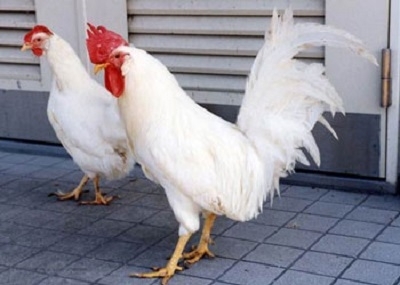
White chicken, White Leghorn
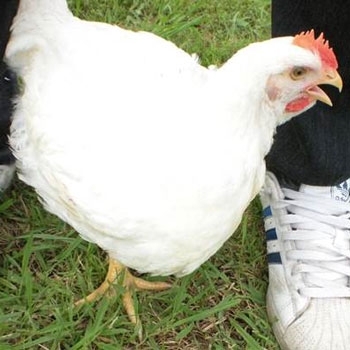
Broiler
Domestication of the “chicken”
I wondered whether there was ever something like a “wild chicken”. The answer is “no”. It is said that the chicken is a creature man domesticated by continuously improving its wild progenitor. What kind of bird was the chicken ancestor before becoming poultry? There are two theories: Theory 1 says that man domesticated the Sekishoku Yakei (Red Junglefowl: found widely throughout Southeast Asia), and that it is the only ancestor. According to theory 2, the Sekishoku Yakei was the main genetic source, but there were also other kinds of jungle fowl involved. This problem hasn’t been solved yet, and every new scientific discovery fuels the debate.
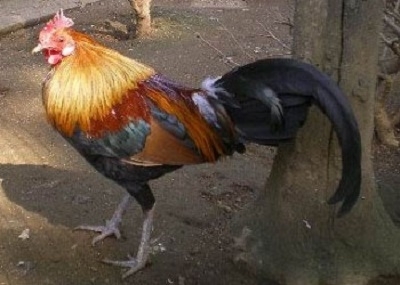
Male Red Junglefowl; Photo by a hobbyist
Man has domesticated and bred animals for his purposes.The domestication of chickens started in 6000 B.C., and in response to demands of the time, areal features and human preferences a number of breeds were born.The highly productive White Leghorn, mentioned above, is a typical breed.
Dogs, for example, are divided into many breeds, such as chihuahuas or miniature poodles. Color variations within one breed are called “variety”. Some domestic animals don’t have “variety”, but chickens normally show numerous “varieties” within one breed.The exact number of chicken breeds in the world is not known, but Professor Tsudzuki said that it may be 200-250. Forty to fifty of them were created in Japan. “This is about 20-25% of the worlds’ breeds. Don’t you think it’s astonishing?” said Professor Tsudzuki. He was quite enthusiastic.

What is a Japanese Native Chicken?
There are many breeds of Japanese Native Chickens (nihonkei). Most of them are fancy breeds, created exclusively for ornamental purposes. But how were these breeds established? When we asked about the roots of the Japanese Native Chickens, Professor Tsudzuki told us that there are almost no historical records, and that in general the theory is as follows:
(1) In the Yayoi Era, the ancestors of the Jidori (Japanese Old Type), such as the Tosa-Jidori, already existed (it is believed that they came from the Korean Peninsula and partly over the Nansei Islands).
(2) During the Heian Period, the ancestors of the Shoukoku (Japanese Elegancy) were brought to Japan from China by the Japanese Envoys to the Tang-Dynasty. During the early Edo Period, the ancestors of the Oh -Shamo (Japanese Large Game), Chabo (Japanese Bantam) and Ukkokei (Japanese Silkie) were introduced from Thailand, Vietnam and China by the trading ships licensed by the Shogunat.
(3) Under the Closed-Door Policy of the Edo Period the Shoukoku, Oh-Shamo, Chabo, Ukokkei, and every kind of local variations of the Jidori, were crossed and refined. By the end of the Edo Period (and for part of the early Meiji Period), almost all breeds of Japanese fancy chickens were established.
(4) During the Meiji Period, many chicken breeds were imported from abroad. They were crossed with native Japanese breeds, and in the Meiji and Taisho Period utility breeds for the production of eggs and meat were born. The Nagoya breed is a representative example.
Poultry product branding
Professor Tsudzuki asked me: “Do you know the brand meat “Hinai Jidori”or “Nagoya Cochin”? It’s somewhat famous!”
I’m really not a consumer of branded chicken, but I often buy “Jidori”-labeled meat.Professor Tsudzuki explained that the Jidori is different from a broiler, as it is the product of an indigenous Japanese breed crossed with a commercial breed mainly imported from the USA. Every prefecture tries hard to refine it and create a so-called JAS-Jidori. At present, there are more than 70 kinds of JAS-Jidori.
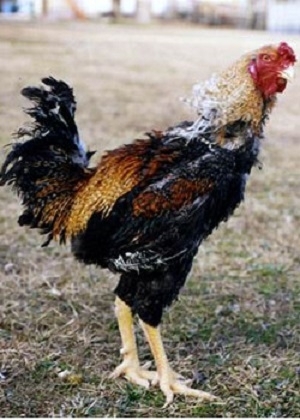
Shamo-Rock (A hybrid between the Oh-Shamo and White Plymouth Rock)
Often the Oh-Shamo is used as an indigenous Japanese breed, but why is it necessary to use Japanese native chickens in order to create a JAS-Jidori?
“Because the meat of Japanese native chickens is very delicious”, Professor Tsudzuki answered.
“So why do Japanese native chickens have to be crossed with foreign breeds? Wouldn’t it be better to eat them as they are?”
The native Japanese chicken is mainly a fancy breed. It is not possible to produce it efficiently enough for commercial use. One more reason is that many breeds of native Japanese chickens are designated as ‘Natural Monuments of Japan’ due to their singularity, and it is not allowed to sell meat of a pure breed designated as a ‘Natural Monument’ on the market.”
Natural Monuments of Japan
Fifteen breeds and two groups (Jidori and Shamo ) of Japanese native chickens are designated as “Natural Monuments of Japan”. I was told that all of these breeds are kept at our university.
The role of genes in chickens
There are two kinds of “genetic traits”. One of them is a discontinuous trait and it is called a “qualitative trait.” It is responsible for plumage color such as “white” or “black”, the form of the comb and so on. The other genetic trait is the continuously changing and distributed “quantitative trait”, the typical example of which is body weight. As far as a qualitative trait is concerned, one trait is controlled by one gene locus, and it is relatively easy to be analyzed. However, in the case of a quantitative trait there are several genes that control one trait and the mechanisms of control are quite complicated. For a long time it was impossible to locate these genes on the chromosome.
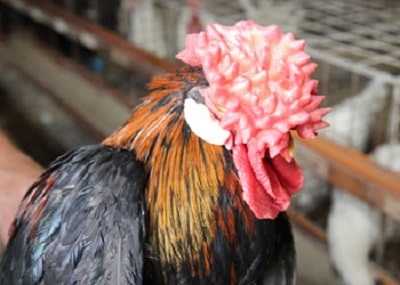
There are many variations of combs. This one is called barakan (rose comb).
A new method of genetic analysis (QTL analysis)
However, Professor Tsudzuki told us that with the development of computer technology and the microsatellite DNA marker in the 1990’s, it became possible to localize the position of genes controlling quantitative traits on the chromosome. Microsatellite DNA, which shows repetitive sequences of two or several bases, is an excellent DNA marker because it is inherited as a Mendelian form, located all over the genome, and has many alleles at one locus. Furthermore it is also easily identified by the PCR-method (an experiment technique amplifying the DNA).
The method for analyzing the position of the quantitative trait loci (QTL) does not directly show the structure and function of the genes controlling the quantitative traits. It is a method to reveal the position of the gene loci on the chromosome, and that can be done without knowing in detail the substance of the genes, which makes it very convenient. The microsatellite DNA is used as a marker when you perform a QTL analysis.
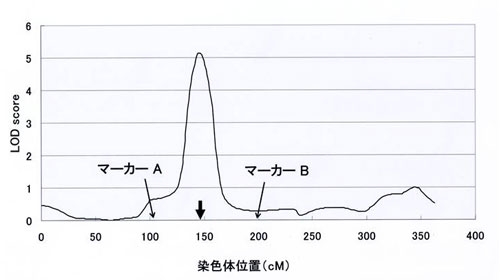
Example of a QTL-analysis result (The horizontal axis shows a chromosome. Just beneath the peak (at the position indicated by an arrow), is the target QTL (quantitative trait locus). Using marker A and B, this point can be detected.
Therefore, if you intend to improve the breeding results of poultry, - for example to increase body weight - you don’t have to know all the details about the genes. You just have to detect the position of the responsible gene on the chromosome to create a heavier type of chicken.This method of using the information about the position of gene loci for animal improvement is called “Marker Assisted Breeding” (“Marker Assisted Selection”). The Marker Assisted Breeding-Method enables breeders to create high quality poultry more efficiently and more accurately.
Professor Tsudzuki told us that for one QTL-analysis several hundred or thousand chickens have to be tested, and it is necessary to examine the 200 types of microsatellite DNA of each individual. Therefore, there are several tens or hundreds of thousands of samples to check.
In other words, you are very busy rearing chickens and collecting data until you can finally start Marker Assisted Breeding, and it literally means struggling and working hard while covered in mud. Also the costs of feed and test reagents are enormous.
“But it’s very challenging!At present, everybody is talking about the dangers of global warming. There are also foreseen crises afflicting the production of eggs and meat.At present, the poultry that is imported from Europe and America and dominates the world by their high productivity is susceptible to heat. It was reported that during this summer’s extreme heat, their productivity decreased. That means that we have to prepare for future global warming and create new chickens that are highly productive even in a hot climate. Using QTL-analysis, it is possible to detect not only the gene loci responsible for weight increase and higher egg production, but also the gene loci controlling resistance to heat. Most Japanese native chickens are fancy breeds, but a QTL-analysis and other research showed that they have also hidden genes predestinated for eggs and meat production.It also became evident that there are breeds resistant to heat.Researching Japanese native chickens will help us to create new types of chicken with high egg and meat productivity, even in hot climates.The more samples we have, the better the result we can achieve. There is a lot to do, but we don’t have enough money or facilities”, said Professor Tsudzuki.

The more samples you have, the easier you can locate the accurate position of the gene loci.
Development of high quality Japanese chickens goes around the world!
At present, almost all of the eggs and meat we eat in Japan come from chickens that have ancestors (foundation stock) from abroad. Originally, in Japan there were no high-performance utility chicken breeds that produced a lot of eggs and grew quickly. Japan’s self-sufficient rate for eggs looks like to be 95% and 70% for meat, but the real self-sufficient-rate is as low as 6% for eggs and less than 1% for meat. Of course, it is very risky to depend almost completely on foreign foundation stock.
“Nowadays, we can decode all base sequences all over the genome. When you know the position of the gene loci on the chromosome by performing a QTL-analysis with DNA-markers, you can check it against the sequence decoding information, and it should be possible to identify the nature of the gene. If you can identify one special gene, you can pick out a superior individual from a domestic animal population much easier and more accurate than with the Marker Assisted Breeding-Method. Genetic diversity of Japanese native chickens will make it possible to efficiently perform QTL-analyses and subsequent gene identification mentioned above. We hope that the genetic information we got will help increase Japan’s self-sufficiency rate for eggs and meat”.
“If our newly-established chickens or our breeding technique spread around the world, we could contribute not only to our own country, but also to other nations with similar problems. Furthermore, if we succeed in developing and spreading a breed worldwide that maintains high productivity even in a future hot environment, we could help to ensure the stable supply of eggs and meat on a global level. As there are almost no religious restrictions for eggs and chicken meat, chickens are the most important protein resource in the world. It is necessary to preserve this situation. I hope that our research of the Japanese native chicken will be of some help”, said Professor Tsudzuki.
The dream of Professor Tsudzuki, who is developing high quality Japanese chickens through an advanced approach, is the transformation of the Japanese Avian Bioresource Project Research Center (founded April 2010) into a university-affiliated facility. Professor Tsudzuki said that he plans to accelerate research and make the catch-phrase “Chicken’s Immensity (Niwatori no Hirodai)” famous all over the world.
On the way back from the poultry house, Professor Tsudzuki met Mr. Kohei Tomonari, a student carrying a box with newly hatched chicks that were born in an incubator. He immediately bent down to examine the chicks, asked about the progress of the research, and reported the condition of the chickens in the poultry house, which he had just checked with his own eyes. It was a long and cheerful conversation.
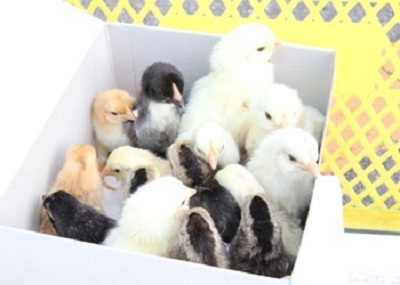
How sweet!
Postscript
“The numbers of indigenous traditional breeds of domestic animal are diminishing all over the world. Also in Japan, native breeds are becoming extinct or decreasing in numbers, and the situation is very critical. Making full use of a new analysis method, Professor Tsudzuki wants to stop this process, appealing to “Preserve the traditional breeds! And use them effectively!” This interview clearly showed me the enthusiasm of everybody at the Japanese Avian Bioresource Project Research Center.Professor Tsudzuki will continue his intense labor, selecting individuals of each breed to avoid extinction and to pass down the future generations a precious part of Japanese culture.I asked: “Is this the feedstuff for one week?”“No,” said Professor Tsudzuki, “That’s not enough. We need more. More than one and a half times the amount of this …. It is very difficult to secure the financing of the feed. And you surely noticed that we don’t have enough space for all the chickens. I wish to have a better environment to raise them. ‘Give me (us) money for feed! Give me (us) money for research! Give me (us) money for poultry houses!’ That’s what I’m always muttering!” Professor Tsudzuki, we really hope your dream becomes reality as soon as possible! (O)
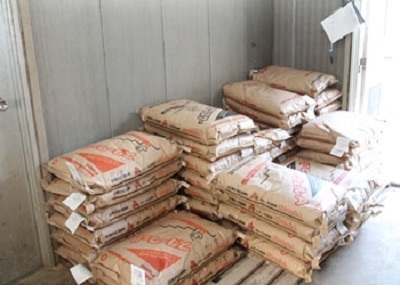
Give me money for feed!


 Home
Home

